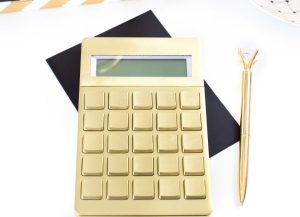With mobile banking, online bill pay, Apple Wallet, and so many other forms of easy payments, identity theft, computer hacking, and fraud is on the rise. However, keeping your financial information safe is not difficult to do. With a few simple steps and a general acknowledgement of the risks, you can feel confident that your information is not being used without your consent. The CGS Team understands the importance of financial security, regardless of it being online or offline, so we are sharing a few key tips to help you keep your personal information safe.
Lock/Encrypt Personal Data
Whether you receive your documents in physical form or electronic form, you need to lock your data. If you prefer to receive your documents through the mail, buy yourself a mini filing cabinet or a lockbox. Place important documents and account information in the cabinet or lockbox and put the key in a safe place.
If you receive your personal and financial documents electronically, create a folder on your desktop that is password protected. Add any account documents, statements, or other personal information to the folder and encrypt it.
Opt for Electronic Statements
Although it is a federal offense to tamper with mail that isn’t yours, the risks of identity theft or fraud can increase drastically if important mail gets into the wrong hands. Most credit card and bank account statements include the account number on the letter. If someone comes across this number, they may be able to use it without your permission.
By opting for electronic statements (that come to your email), you are reducing the risk of mail getting lost or stolen. If you do chose electronic, keep your passwords strong and be wise about Wi-Fi. We will get into that in more detail below.
Limit What You Carry
Most people think it’s safe to carry their social security card in their wallet. This is a huge mistake. Your social security card is extremely important in validating your identity. If you keep it in your wallet and your wallet is stolen, your SS card is gone and your number is out there for fraudsters to use. Keep your social security card in a safe place at home.
A portable safe box that requires a key is a good option for your social security card, birth certificate, and other extremely valuable documents. Also, limit the number of credit/debit cards you carry. If your wallet or bag is stolen, you don’t want all of your cards to go with it. Not only is it a hassle to cancel and order new cards, you run the risk of people using the information.
Understand the Risks of Wi-Fi
The internet is an amazing thing, but if you are not careful, you can leave your network open for hackers and fraudsters to take advantage. If you connect to an unsecured (not password protected) network, say at Starbucks or some other public place, you are allowing your computer to be seen by other users on that network.
Someone with hacking skills can watch as you enter your password into your bank’s online website, or watch as you enter credit card information to make a purchase. If you have to use a public network, keep your usage to generally browsing. Avoid getting on to financial websites and don’t make online purchases.
Do you have Wi-Fi at your house through a cable provider? If so, is it password protected? The answer should be yes! It takes 2 minutes (or less) to make your network secure. When your network is not password protected, it is considered public, even though you are the one paying for it. When it’s public, anybody in close proximity can use your service. There’s no excuse for your network not to be secure. If you need help adding a password, contact your cable/internet provider.
Keep Your Passwords Strong
When it comes to passwords, you need to be creative. If your name is Kathy and your birthday is May 5, you don’t want to use a password like Kathy55. That password is extremely easy to figure out and you run the risk of spammers thinking of it. Try to shorten a phrase and substitute letters for numbers. Including special characters is also effective. The Federal Trade Commission provides a great example: “’I want to see the Pacific Ocean’ could become 1W2CtPo.”
Look for SSL When Purchasing Online
One of the requirements for online retailers to take payments via their website is to have a SSL. An SSL is a Secure Sockets Layer that is used for establishing an encrypted link between a web server and a browser. This link ensures that all data passed between the web server and browsers remain private and integral. To protect the information that is passed between the server and browsers, for example your credit card information when purchasing a shirt online, an SSL certificate is used.
The best way to identify if a site is using an SSL certificate on the checkout page is to look for “https” in the browser name. The “s” added to the standard http confirms an SSL certificate is being used. Keep in mind that SSL certificates are only required on pages where important financial information is shared. So you may see http on the homepage and https on the checkout page.
Related: 7 Ways to Organize Your Finances
Keeping your personal information safe is not hard to do. You just need to be wise about what comes in and goes out, physically or electronically. What do you do to protect your important information? Do you have a filing or organization system in place? Share your tips by leaving a comment below! Also, check out the article How to Set Up a Financial Filing System for some great tips on getting your information organized.





